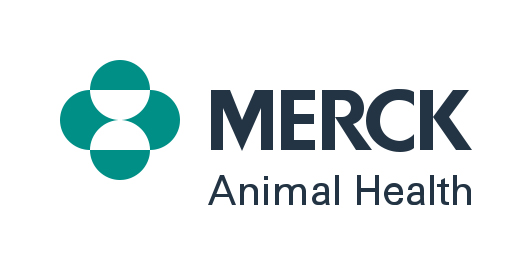
Frequently Asked Questions:
Deworming





Control parasites to protect the productivity of your herd
Learn from these commonly asked questions how internal and external parasites are impacting your bottom line and what you can do to effectively deworm your herd.
Impact of parasites
The No. 1 effect of internal parasites is a decreased appetite, which means there are fewer nutrients for an animal to absorb. On top of that, internal parasites have a direct effect on nutrient absorption because they cause inflammation in the gut.
Non-parasitized cattle will have1,2:
- Better feed intake
- Increased average daily gain
- Improved milk production
- A positive immune response to vaccines and diseases
Even a low number of internal parasites can affect cattle health and productivity. These low-level effects are of major economic importance. Clinical parasitism is when there are visible, disease-like symptoms, such as a rough hair coat, anemia or diarrhea.
A fecal egg count reduction test (FECRT) is the standardized diagnostic tool to test manure for the presence of internal parasites’ eggs. Your veterinarian or Merck Animal Health representative can assist with FECRT testing.
How to deworm
Not all dewormers are equal. There are three classes of dewormers approved for use in U.S. cattle: benzimidazoles, endectocides or macrocyclic lactones and imidazothiazoles.
Certain classes of dewormers are not working as well as they have in the past. However, the SAFE-GUARD® (fenbendazole) formulations — all of which are in the benzimidazoles class — provide a median efficacy above 99.7%.3
For cow-calf operations, deworming should be considered two to three times annually.
- Fall deworming can result in cattle being worm-free over the winter months in areas that have a hard frost. This means cattle will be able to better utilize nutrients. This is especially critical for cows in their second or third trimesters of pregnancy.
- Treat cattle at turnout, but remember, cattle pick up parasites almost immediately after they are on contaminated green grass, and those parasites can start doing damage in a very short time.
- Mid-summer deworming improves cattle health and production. Using feed forms of dewormers — such as those found in range cubes, dewormer blocks or mineral — requires relatively little time and labor while still being highly effective.
Don’t forget to deworm calves at cowside. When calves start grazing, they are at a high risk of picking up internal parasites. Deworming appropriately from the time of early exposure (from the age of 2 months) can result in improved weaning weights.
For spring-calving herds, it typically is good to deworm calves six to eight weeks after turnout onto pasture. Feed or mineral formulations require relatively little labor.
Leverage this handy scheduling tool to time your deworming this year.
Using SAFE-GUARD feed formulations — such as those found in range cubes, dewormer blocks or mineral — requires relatively little time and labor while still being highly effective. You can deworm cattle while they are on pasture.
How to evaluate effectiveness
Work with your veterinarian to do a fecal egg count reduction test (FECRT) annually. It is a simple, reliable method to assess efficacy. It is important that 20 samples are taken at treatment and two weeks post-treatment. Contact your Merck Animal Health representative for a free FECRT kit.
Fly control
According to the University of Nebraska, losses due to horn flies alone on cattle operations are greater than $1 billion annually.
Flies can reduce profitability and productivity through:
- Reduced grazing
- Disease transmission such as pinkeye and infectious bovine rhinotracheitis (IBR)
- Additional pest concerns (i.e., grubs)
Good fly control incorporates on-animal tools like pour-ons, feed additives, insecticides ear tags, sprays, dust bags and backrubbers (oilers). No amount of fly control will work if conditions are not sanitary. Removing manure, eliminating old wet hay and ensuring proper drainage are important.
Rotating active ingredients used in fly control products is an important method to curb insecticide resistance.
Optimal face fly control should include a pyrethroid class chemical (alone or in combination) because of pyrethroid’s ability to repel face flies away from the face and eyes of the cattle. Combination insecticide ear tags (like DOUBLE BARREL® VP) are good insecticide ear tags to use if both face fly and horn fly control is needed.
Pour-on fly control such as ULTRA SABERTM POUR-ON provides lasting residual control against a broad spectrum of external parasites like flies and lice.
Cattle Producers:
Merck Animal Health is Here to Help
Always work with your local veterinarian who knows your goals and health challenges in your area.

Explore the complete line of dewormers from Merck Animal Health

Important Safety Information
ULTRA SABER™ POUR-ON INSECTICIDE: Do not apply to lactating or dry dairy cows.
Safe-Guard Important Safety Information
Do not use in beef calves less than 2 months old, dairy calves and veal calves. A withdrawal period has not been established for this product in pre-ruminating calves. Additionally, the following meat withdrawal and milk discard times apply:
SAFE-GUARD® (fenbendazole) Paste: Cattle must not be slaughtered for 8 days. For dairy cattle, the milk discard time is 96 hours.
SAFE-GUARD® (fenbendazole) Suspension: Cattle must not be slaughtered for 8 days. For dairy cattle, the milk discard time is 48 hours.
SAFE-GUARD® (fenbendazole) EnProAl Type C Medicated Block: Cattle must not be slaughtered for 11 days. For use in beef cattle only.
SAFE-GUARD® (fenbendazole) 20% Protein Type C Medicated Block: Cattle must not be slaughtered for 16 days. For use in beef cattle only.
SAFE-GUARD® (fenbendazole) Type A and other medicated feed products (pellets, cubes, free-choice mineral, or free-choice liquid): Cattle must not be slaughtered for 13 days. For dairy cattle, the milk discard time is 60 hours.
References
1. Smith, RA, Rogers, KC, Huse, S, Wray, MI, Brandt, RT, Hutcheson, JP, Nichols, WT, Taylor, RF, Rains, JR, McCauley, CT. Pasture deworming and (or) subsequent feedlot deworming with fenbendazole. I. Effects on grazing performance, feedlot performance and carcass traits of yearling steers. The Bov. Pract.. 2000. 34(2)104-114.
2. Safe-Guard/Panacur Deworming Strategies for Dairy Cattle. Dairy Monograph. Intervet.
3. Merck Animal Health National FECRT Database.
